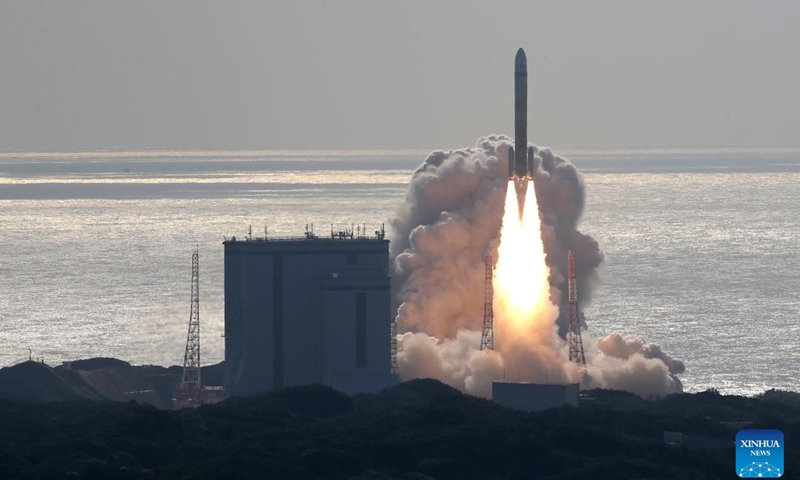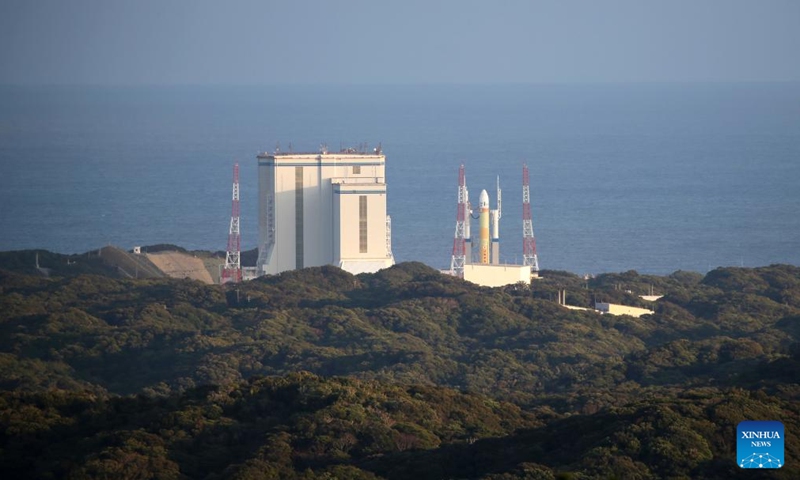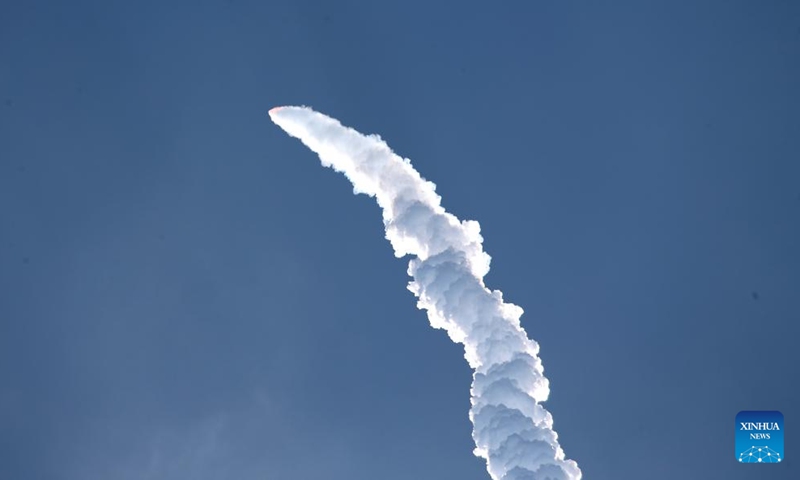
The H3 rocket test flight No.2 blasts off from the Tanegashima Space Center on Tanegashima Island in the southwestern prefecture of Kagoshima, Japan, Feb. 17, 2024. Japan launched its flagship H3 rocket on Saturday nearly a year after the maiden launch failure, according to the country's space agency. (Xinhua/Yang Guang)

The H3 rocket test flight No.2 blasts off from the Tanegashima Space Center on Tanegashima Island in the southwestern prefecture of Kagoshima, Japan, Feb. 17, 2024. Japan launched its flagship H3 rocket on Saturday nearly a year after the maiden launch failure, according to the country's space agency. (Xinhua/Yang Guang)

The H3 rocket test flight No.2 is ready to blast off from the Tanegashima Space Center on Tanegashima Island in the southwestern prefecture of Kagoshima, Japan, Feb. 16, 2024. Japan launched its flagship H3 rocket on Saturday nearly a year after the maiden launch failure, according to the country's space agency. (Xinhua/Yang Guang)

The H3 rocket test flight No.2 blasts off from the Tanegashima Space Center on Tanegashima Island in the southwestern prefecture of Kagoshima, Japan, Feb. 17, 2024. Japan launched its flagship H3 rocket on Saturday nearly a year after the maiden launch failure, according to the country's space agency. (Xinhua/Yang Guang)
Japan launched its flagship H3 rocket on Saturday nearly a year after the maiden launch failure, according to the country's space agency.
At about 9:22 a.m. local time, the vehicle, H3 rocket test flight No.2, was launched from the Tanegashima Space Center on Tanegashima Island in the southwestern prefecture of Kagoshima, the live feed of the Japan Aerospace Exploration Agency (JAXA) showed.
Considering the failed attempt in 2023, a mock satellite for performance verification was loaded onto the H3 rocket instead of an actual satellite from the original plan, with two microsatellites riding along, said the JAXA.
Second-stage engine ignition and separation of one of the microsatellites were confirmed by the space agency not long after the liftoff, marking the completion of the launch's major task.
The next-generation heavy-lift H3 rocket is developed as a successor to the current mainstay H2A rocket which is expected to be retired in the next fiscal year starting in April. With Saturday's launch, the country aims to confirm the rocket's capacity to control its positioning and deploy satellites.
In addition to satellite launches, the H3 launch vehicle can deliver supplies and materials to the International Space Station and the Gateway, a lunar-orbiting outpost planned under the U.S.-led Artemis space program, national news agency Kyodo reported on Saturday.
The launch, initially planned for Thursday, was rescheduled due to bad weather conditions, a year after the maiden launch failure in March 2023, when the rocket's second-stage engine failed to ignite, prompting a self-destruct sequence just minutes after liftoff.
